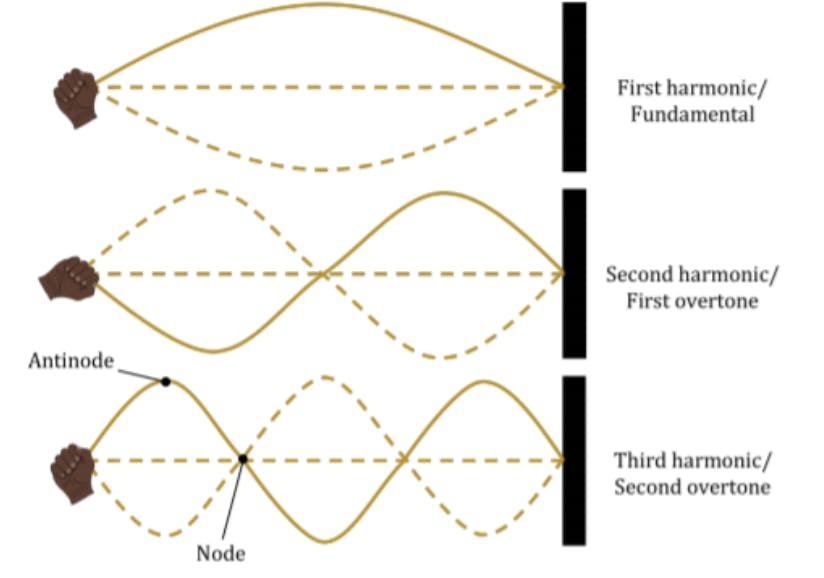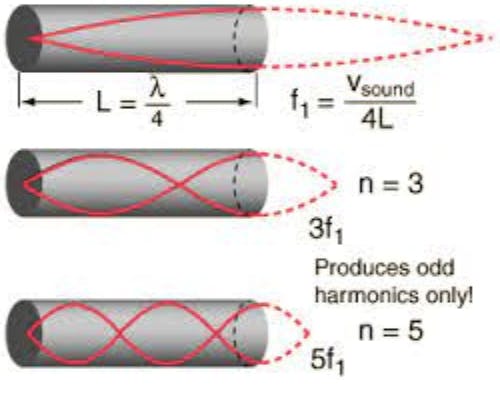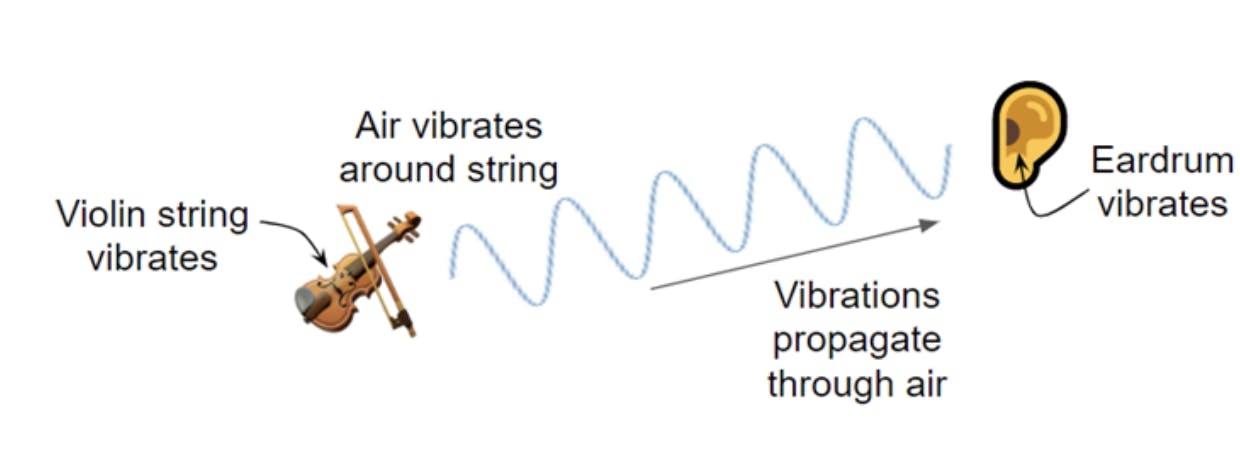TL;DR Science: The Physics Behind Musical
By Philip A.
April 07, 2023 · 3 minute read
Physics
Mathematics
Engineering
Musical instruments have existed for thousands of years and they have been intertwined with culture. Even today, music is an important part of society and playing an instrument is fairly popular. But how does blowing air down a trumpet or plucking a violin string make such a distinct sound?
The physics of musical instruments is the physics of waves. Waves are disturbances that propagate through space. Mechanical waves such as sound and waves on strings need a medium to propagate through. When a travelling wave propagates it transfers energy to the particles of the medium which in turn oscillate according to the characteristics of the wave around their equilibrium position.
When two waves of the same characteristics move towards each other and merge, they create what is called a standing wave. A standing wave does not propagate through space rather it forces certain particles of the medium to oscillate and others to remain still. The latter are called nodes. But what is interesting about standing waves is that in order to be created they need waves of very specific frequencies to merge. The lowest possible frequency that can create a standing wave is called the fundamental or the first harmonic. The next is called the second harmonic and so on.

Sound is a specific kind of wave. It is created due to a longitudinal wave, one that forces the particles of the medium to move parallel to the direction of propagation, creating pressure differences in the air which in turn make our eardrums vibrate with the same frequency. We can create standing sound waves with air tubes that are open on one end and closed on the other. When we start blowing air through the one end, we are emitting all sorts of frequencies of disturbances. If we produce one of the harmonic frequencies, then sound of that frequency is created and it propagates out of the tube.

The resonant frequencies of the air in a tube depend on the speed of the the waves in the medium and the length of the tube. Since the speed of sound is constant, we can only change the length of the tube in order to change its frequency. Manufacturers know that humans can only blow air of a certain frequency range, so what they do is make the air tube be able to change length. So, when we press certain keys on a trumpet we are changing the length of the air tube and therefore changing the frequency of the sound coming out.

On the other hand, stringed instruments like violins work by creating standing waves on the violin strings which make the wood of the instrument resonate and in turn the air in the violin body. What is different in these kinds of instruments is that the resonant frequencies are dependent on the tension of the strings and their length. To create different sounds violinists change the length of the string with their finger. The tension dependency also explains why violins can be off-tune if the strings are not taut.

The physics of music is quite interesting because it allows for all sorts of phenomena to be explained intuitively and to be replicated. One such phenomenon is the whistling of the wind. When wind passes by different objects it creates standing waves in open-air tubes that usually are high pitched.
TL;DR
Music is a key part of our culture and our everyday lives which can be intuitively understood by understanding the physics of waves. Sound is a disturbance that propagates through the air changing its pressure and making our eardrums vibrate. The way to create musical sound is by emitting harmonic frequencies in air tubes. Finally, the frequency of sound can be tweaked by changing the length of the air tube without the need of emitting a different frequency.
Did you enjoy this article?
About The Author
Philip is a first-year physics student with a keen interest in all things physics, mathematics and computer science.